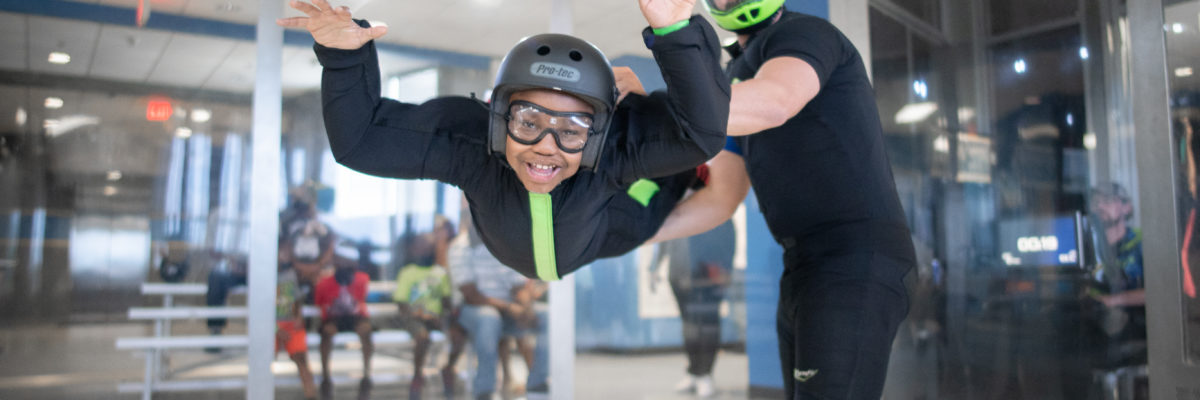
Simulated Skydiving – Get A Taste Of The Real Thing
Tuesday, September 7, 2021
- Team XP
- 9/07/21
- 0
- General, Indoor Skydiving
Simulated Skydiving – Get A Taste Of The Real Thing
Vertical wind tunnels used for simulated skydiving have been around for ages now, but over recent years wind tunnel bodyflight has grown exponentially into a legitimate sport that people have gotten very, very good at. How close is it to skydiving though? Let’s have a look at how it all works…
Relative Wind
The techniques used to move around while skydiving involve using the surfaces of your body to deflect the rushing wind in different directions. If you are flying freely in open space with no resistance, then deflecting the wind makes you move in the opposite direction. In simple terms, if you are flying on your belly (the position everyone learns first) and you want to move forwards – you simply extend your legs a bit to make a larger surface to push the wind away behind you.
Whether you have jumped out of a plane or are flying in the simulated skydiving environment of a vertical wind tunnel, the techniques used are the same. The only difference between simulated and ‘real’ skydiving is in how the wind is generated – by using gravity to fall through it, or by using big motors and fans to push it through a big tube.

Advantages
The simulated skydiving environment offers some important advantages over jumping out of aircraft:
Age:
Skydiving from airplanes is amazing, but the USPA (United States Parachuting Association) requires you to be 18 years old. To do a simulated skydive with us you only need to be older than 3 – so even most of the very smallest humans can play too. Also, there is no upper age limit – you just have to want to do it and we will make it happen.
Heights:
The flying sensations of jumping from an airplane or learning in a simulated environment are the same – only to fly indoors you don’t need to go anywhere high up first. Many people use skydiving to face their fear of heights, but with indoor skydiving you can try out how it feels first without being anxious about heights.
Freedom:
The most common way to experience a skydive for the first time is via a tandem jump. This means being harnessed together with an instructor piggy-back style. For a simulated skydiving experience in our wind tunnel you are solo and free from minute one. Your instructor is right there to teach you things and help with stability if required, but the nature of the tunnel environment allows for such control that you are doing it all yourself right from the very start.

Training:
The indoor environment allows for an amazing level of precision that has pushed people’s skill level forward an amazing amount in recent years. The ability to teach people up close and finely adjust the speed of the wind means that ‘simulated skydiving’ practice is actually an incredibly valuable tool for the progression of skydiving. The techniques we have developed over time make indoor flying a very efficient and enjoyable way to learn.
Symbiosis:
Both indoor and outdoor skydiving are amazing pursuits, and the relationship between them is strong. There are indeed those who only fly indoor and have no interest in skydiving, and also many skydivers who have never flown in a simulation – but mostly they cross over both ways. The good news is that we do skydiving too! When you visit our tunnel and find yourself curious about what happens next, this could involve both indoor and outdoor progression at our nearby skydiving operation.
The best way to find out about using your body to fly is to come join us and give it a go. Our highly experienced team is very good at introducing people to indoor skydiving, and will make sure you get the absolute most out of it while having a spectacular and rewarding experience.

The entire staff is extraordinarily professional and gracious. They are extremely safety conscious while at the same time giving everyone as much freedom as they can safely manage. A rare combination. While we (adults) were there, our instructor also suited up and trained a 2-year-old boy and a three-year-old girl.
Jack Berry
Copyright © 2025, Paraclete XP Indoor Skydiving, All Rights Reserved.
DropZone Web Design & Marketing by Beyond Marketing, LLC